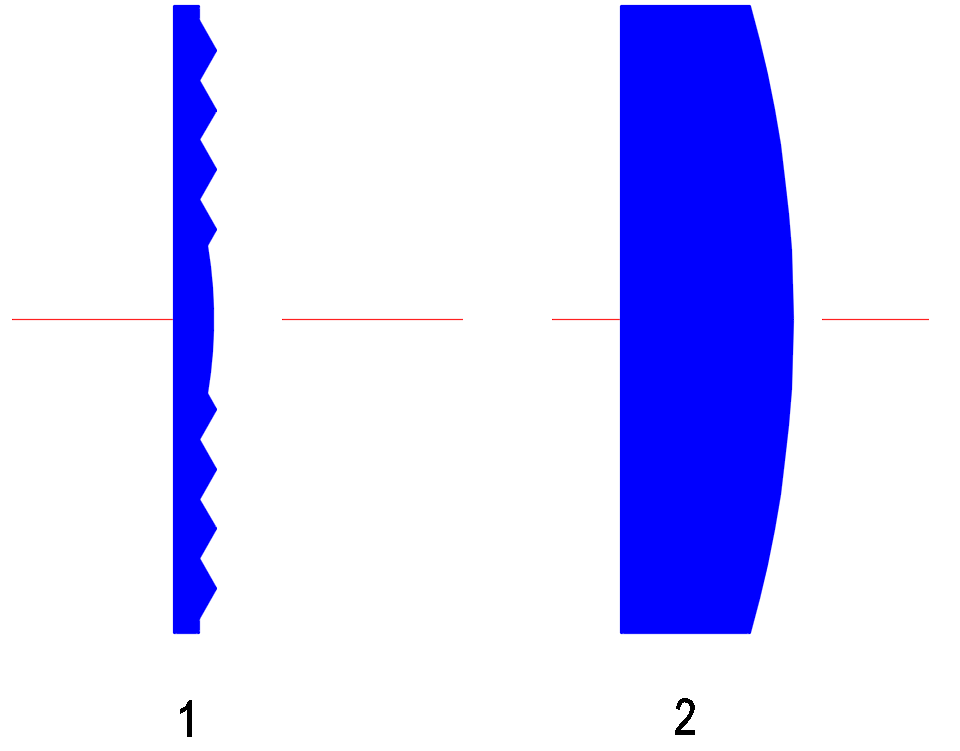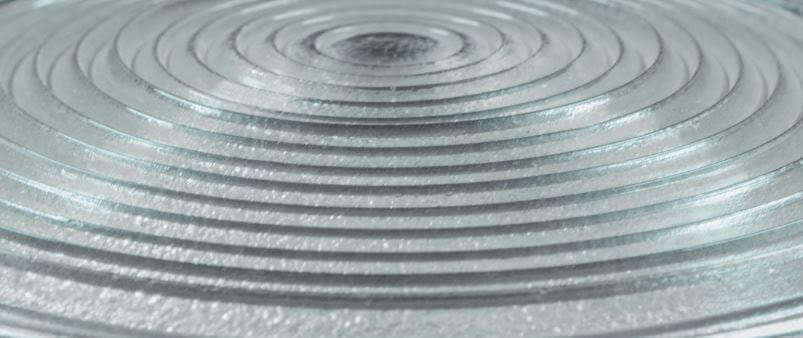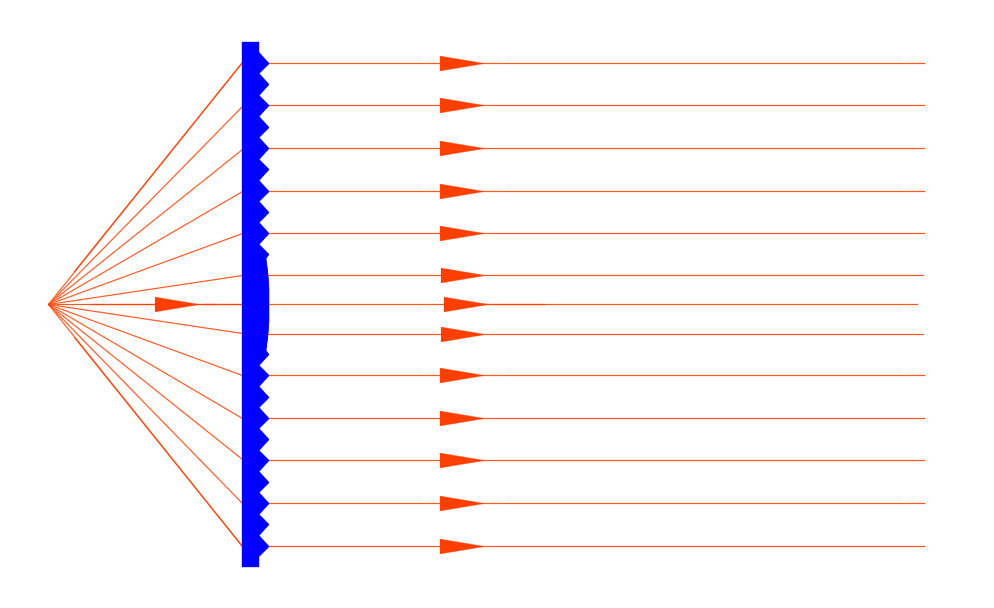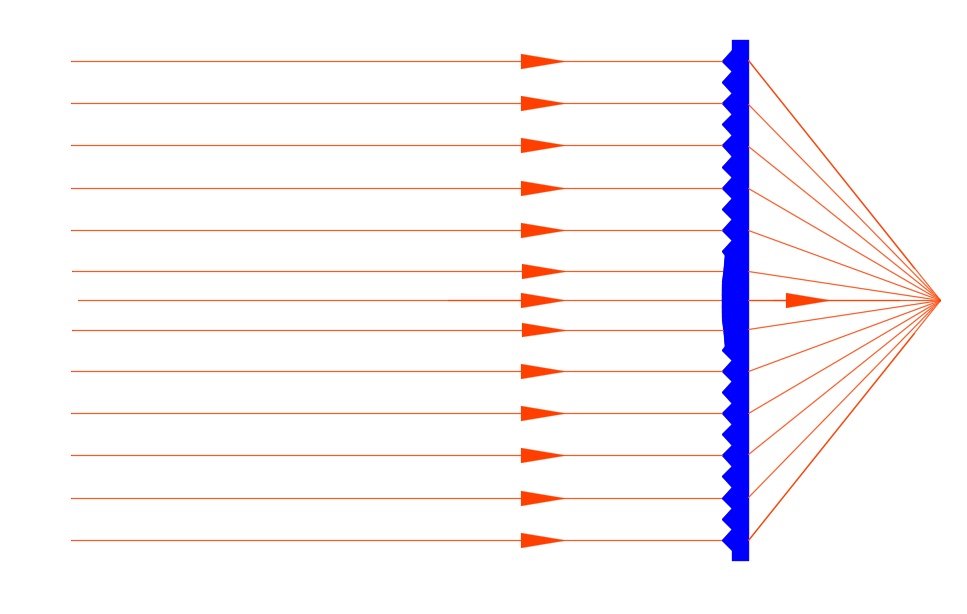Fresnel lenses are lenses composed of a series of concentric rings. The Fresnel lens construction design allows for large aperture and short focal length with less mass and volume compared with a conventional lens design.
Fresnel lens were invented by French physicist Augustin Jean Fresnel (1788-1827) and used in lighthouses all around the world. Since then it has been used in applications for light collection, light collimation and magnification. Today a common application that you will find a Fresnel lens in is a magnifying glass. You will likely find Fresnel lenses in detector operations, condenser systems and emitter operations. However, you can also find Fresnel lenses in devices used for illumination.
While originally made of glass, the Fresnel lens can be found in a large variety of substrates and sizes. Nowadays, Fresnel lenses are made of plastic because of the lightweight traits of plastic compared to glass.


With a Fresnel lens, the conventional optical lens is replaced. This is because the Fresnel lens’s contour can refractive surfaces more efficiently than a conventional optical lens.
In other words, the Fresnel lenses are designed to manipulate parallel light rays and focus them in a common area.
The three main ways that a Fresnel lens can be used are for:
• Magnification
• Light collection
• Light collimation
Even though the Fresnel lens is a lot more narrow than other types of lenses available, they can focus light a lot more efficiently than conventional optical lenses. Also, Fresnel lenses don’t scatter light across surfaces. This means that most of the material used in a Fresnel lens can increase the absorption of light upon the object that’s being looked at.


Due to the design of the Fresnel lens, this lens can produce individual light patterns. Fresnel lenses can have an unlimited combinations of light patterns in it’s design.
In today’s world, Fresnel lenses are commonly used in solar applications. This is because of the lens’ ability to concentrate light onto a heated surface. If you have a solar panel unit to heat your home or your pool, your solar panel system likely uses a Fresnel lens.
Fresnel lenses were initially produced by hand grinding and polishing glass. The manufacturing process was tedious and later evolved into molten glass poured into molds. In the 20th century, optics quality plastic and injection-molding were used to produce commercial applications. Fresnel lenses can be manufactured from a variety of substrate such as acrylic, polycarbonate or vinyl.
Are you looking to order a Fresnel lens for your custom optical needs? We’re here to provide you with the perfect solution you need. Click here to contact us today to learn more!